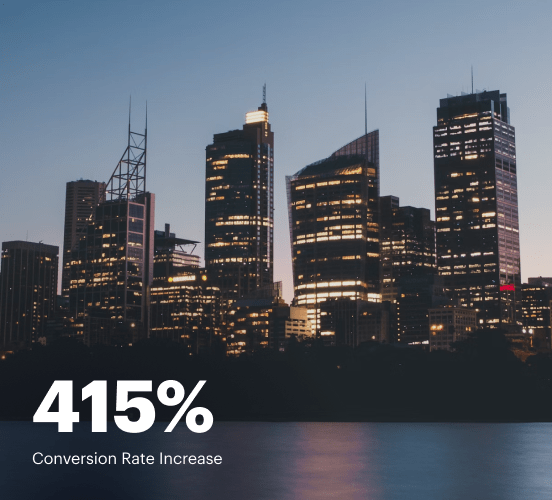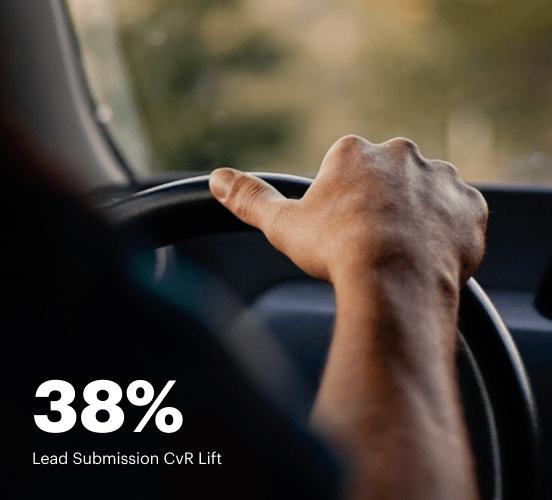WordPress vs. Tilda: the best platform for a seamless web experience
Discover how WordPress compares to Tilda regarding features and usability. Find out which platform provides the competitive advantage your business deserves.
Get startedSee how Instapage stacks up against the competition
| Feature | Instapage | Other builders |
| Drag-and-Drop Tools | ||
| Conversion-optimized templates | ||
| Manual and AI-powered A/B Tests | ||
| AI content suggestions | ||
| Popups and sticky bars | ||
| Canvas and grid blocks | ||
| Reusable and global elements | ||
| Form and popup builders | ||
| Built-in Heatmaps | ||
| Central analytics dashboard | ||
| Ad-to-page personalization and collections | ||
| Contacts, lists, and email | ||
| Dedicated, full-service CRO experts | ||
| Enterprise-ready platform |
Leading the way in building high-performing landing pages





Why Instapage is the smarter choice for your campaigns
Get everything you need to build, scale, and optimize high-converting landing pages—without coding.
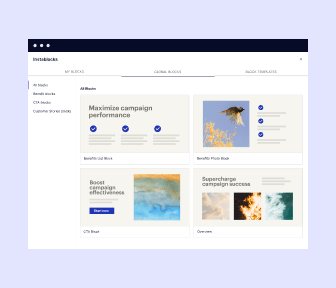
Easier page building without coding
Instapage offers a flexible and seamless page creation experience with a library of 500+ conversion-focused layouts, Instablocks®, a drag-and-drop builder, and AI content generation. With technologies like Thor Render Engine®, you can create on-brand, mobile-responsive landing pages that load quickly and start converting during initial visitor clicks.
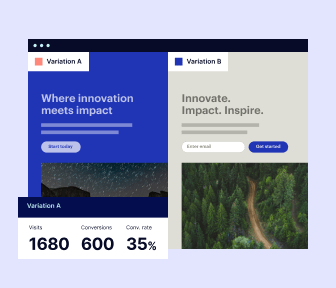
More insights — better results
Instapage lets you see in detail how each landing page experience and variation is performing so you can make targeted changes that boost page conversions. Use heatmaps for a better understanding of on-page activities, run A/B tests and AI-assisted experiments, and then track and evaluate results within robust analytics dashboards.
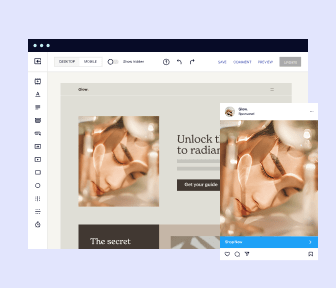
More personalized experiences
Instapage lets you quickly create high-performing landing pages tailored to each of your ad campaigns. Deliver personalized experiences for distinct audiences using dynamic text replacement. Effortlessly align specific advertisements to unique pages with AdMaps. Monitor audience-level metrics using our advanced data tools.
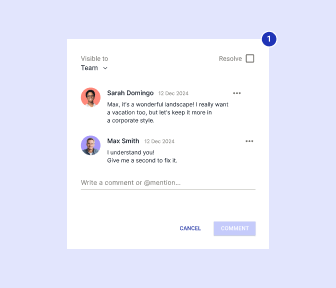
Built-in collaboration
Instapage collaboration capabilities bring your entire team together to speed up the process of landing page review, approval, and launch. No more frustrating and unnecessary revisions or edits scattered across emails. Provide instant feedback, conduct real-time page edits, and securely share your pages with outside stakeholders.
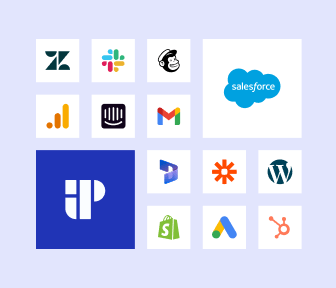
Free up time for your business
Invest time into business growth, not busy work. Launch landing pages faster with reusable forms and templates. Build once, reuse forever.
Explore all integrations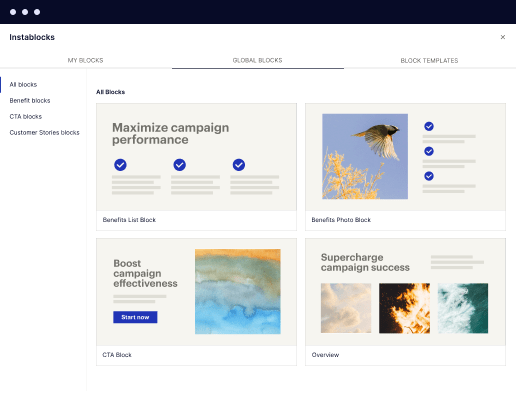
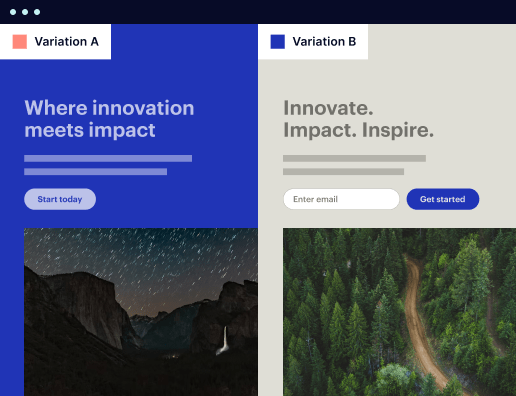
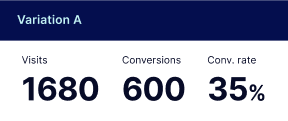
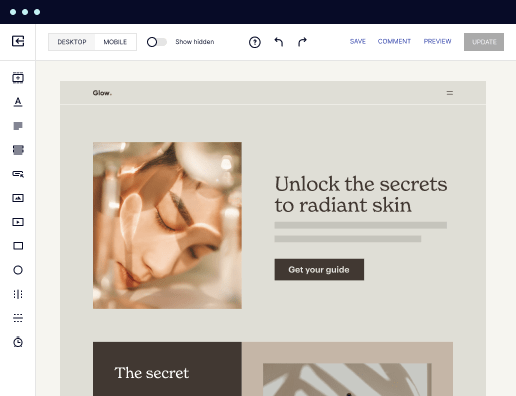

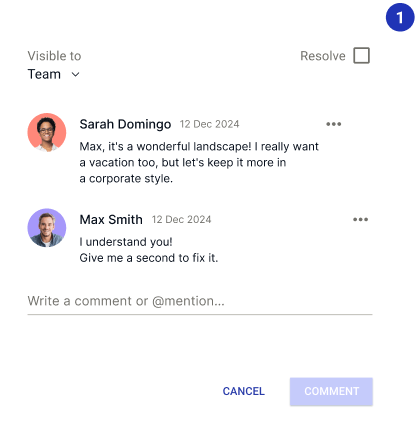

Easier page building without coding
Instapage offers a flexible and seamless page creation experience with a library of 500+ conversion-focused layouts, Instablocks®, a drag-and-drop builder, and AI content generation. With technologies like Thor Render Engine®, you can create on-brand, mobile-responsive landing pages that load quickly and start converting during initial visitor clicks.
More insights — better results
Instapage lets you see in detail how each landing page experience and variation is performing so you can make targeted changes that boost page conversions. Use heatmaps for a better understanding of on-page activities, run A/B tests and AI-assisted experiments, and then track and evaluate results within robust analytics dashboards.
More personalized experiences
Instapage lets you quickly create high-performing landing pages tailored to each of your ad campaigns. Deliver personalized experiences for distinct audiences using dynamic text replacement. Effortlessly align specific advertisements to unique pages with AdMaps. Monitor audience-level metrics using our advanced data tools.
Built-in collaboration
Instapage collaboration capabilities bring your entire team together to speed up the process of landing page review, approval, and launch. No more frustrating and unnecessary revisions or edits scattered across emails. Provide instant feedback, conduct real-time page edits, and securely share your pages with outside stakeholders.
Free up time for your business
Invest time into business growth, not busy work. Launch landing pages faster with reusable forms and templates. Build once, reuse forever.
Explore all integrationsGet started with Instapage in a few steps
-
Create your Instapage account
Start with Instapage by signing up via Google or your email. You'll get access to a free 14-day trial to discover Instapage capabilities. Feel free to cancel anytime during the 14-day trial if you decide that our product is not suitable for your business. -
Build and personalize your page
Create your first landing page from scratch or choose a template from 500+ customizable layouts. Use the drag-and-drop builder to add page elements, fonts, and backgrounds, refine content with AI, or add custom HTML, Javascript, and CSS. -
Review and make edits
Collaborate on page designs and streamline review processes. Invite your team members and stakeholders to review, edit, and provide feedback on your landing page. Collaborate knowing your page is confidential and only accessible to authorized users. -
Publish and track page performance
Publish your page to a domain or custom URL. Connect your pages to the ads you've created and track page performance within the analytics dashboard, run A/B tests and AI experiments, analyze results, and continuously optimize your landing page to maintain high conversions.
WordPress vs. Tilda: A Head-to-Head Analysis (With a Surprise)
Finding the right platform for building a website or landing page can be a daunting task. With so many options available, it’s like navigating a maze filled with pitfalls and dead ends. WordPress and Tilda each offer unique pathways to online success, yet choosing between them might feel like picking a favorite child. This article dives into the main features, usability, performance, support, and pricing strategies, while introducing a strong contender, Instapage, who might just steal the show. By comparing these three platforms, you can better understand which one aligns with your marketing goals and day-to-day needs. So grab your virtual gear and let’s jump into the ring of digital marketing tools where creativity meets functionality, ensuring your journey from novice to pro is as smooth as possible. Let’s explore how these platforms stack up against each other, what sets them apart, and how to make your decision effortlessly.
Introducing the Competitors: Giants of the Digital World
WordPress and Tilda are two heavyweights in the realm of digital marketing, both earning their reputations through diverse offerings and a sizable user base. WordPress, known primarily for its versatility and extensive plugin ecosystem, allows users to create everything from simple blogs to complex online stores. Its strength lies in the ability to customize and scale a site based on individual needs – think of it as a Swiss Army knife for website creation. On the other hand, Tilda gazes confidently into the digital landscape, offering visually stunning design capabilities that appeal to creative minds. With a unique block-based approach, Tilda positions itself as the perfect tool for designers and marketers alike who want to create beautiful landing pages without diving into code. As we unpack this comparison, let’s not forget about Instapage, a player in this game that specializes in high-converting landing pages. With its own set of powerful features, it challenges both WordPress and Tilda in providing responsive and attractive designs with ease. As we analyze these platforms, the excitement builds—who will emerge victoriously?
Round One: Feature Face-Off
In the first round of our comparison, it’s essential to highlight the standout features that each platform brings to the table. WordPress boasts a robust catalogue of plugins, making it incredibly customizable; from SEO tools like Yoast to e-commerce plugins such as WooCommerce, the possibilities are near endless. Meanwhile, Tilda dazzles users with its unique blocks that allow for seamless design integration, empowering users to add animated elements, responsive layouts, and more with just a few clicks. The whimsical balance here hints that while both platforms bring their A-game into this feature smackdown, there's still a contender lurking backstage, just waiting to revolutionize the way we create landing pages. With these tools at your fingertips, each platform’s approach to design and functionality plays a crucial role in your overall success, making it easier to choose the right one for your projects.
Round Two: Usability Unleashed
When it comes to usability, WordPress and Tilda cater to different audiences. WordPress has a reputation for a steeper learning curve, which may resemble an uphill adventure for first-time users. However, for those willing to invest the time, the rewards of mastering it are immeasurable. Tutorials, forums, and community support abound, allowing users to climb their way to success. On the other hand, Tilda focuses on providing a more user-friendly experience, offering sleek templates and intuitive drag-and-drop capabilities that require little to no technical skill. It's like taking a joyride through a beautiful landscape with the wind in your hair. Both platforms aim to make their users proficient, but it’s essential to consider your comfort level—are you ready for a learning adventure or do you prefer a straightforward approach?
Highlights of WordPress Features:
- Vast library of plugins for enhanced functionality.
- Highly customizable themes to suit various niches.
- Robust SEO capabilities to improve search visibility.
- Easily scalable to accommodate growing businesses.
- Strong community support with plenty of resources.
Standout Features of Tilda:
- Easy-to-use block-based design interface.
- Responsive templates that adapt to various devices.
- In-built animation features for eye-catching pages.
- Integrated analytics for tracking performance.
Complementary Strengths of Both Platforms:
- Both offer customizable templates.
- Responsive design for different devices.
- Access to tutorials and community support.
- Options for SEO optimization.
- User-friendly interface aimed at efficiency.
- Strong focus on marketing capabilities.
As both platforms step into the ring, it’s clear each one has unique strengths—WordPress with its extensive features and customizability, and Tilda with its elegant design capabilities. However, don't forget Instapage, which might just be the secret weapon you need for higher conversion rates, proving it could take on both of these titans.
Round Three: Performance Showdown
In today’s fast-paced digital environment, performance can make or break a website. WordPress users must focus heavily on optimizing their chosen themes and plugins to ensure fast loading times. An unoptimized WordPress site can feel like wading through molasses, frustrating both users and search engines alike. In contrast, Tilda is engineered for speed, with its streamlined design approach allowing for quicker loading times and enhanced user experience. Both platforms offer mobile responsiveness, but it’s critical to ensure that whichever you choose is optimized for performance. Ultimately, page speed impacts interaction rates, rankings, and customer satisfaction, making this an essential round in the WordPress versus Tilda battle.
Round Four: Support Resources and Community
When seeking guidance, the value of a reliable support system cannot be overstated. WordPress has a massive community backing it, with countless forums, tutorials, and dedicated support channels available. However, finding the right information might feel like navigating through a jungle at times. Tilda, on the other hand, offers responsive support options, and the community of creatives can share insights that make problem-solving a breeze. Imagine finding your trusty sidekick in each platform’s support teams, ready with valuable assistance tailored to help you spruce up your pages and fix breaks. The availability of robust support and community interaction can significantly ease your journey, regardless of your chosen platform.
Round Five: Pricing Structures in Review
Advantages of WordPress Pricing Strategy:
- Open-source platform available for free.
- Various hosting plans to fit different budgets.
- Flexibility to choose between premium and free themes.
- Numerous free plugins to enhance functionality.
Advantages of Tilda Pricing Strategy:
- Affordable plans starting at a low monthly fee.
- Simplicity in pricing with all features included.
- No hidden costs associated with usages.
- Flexible options for personal and business needs.
Both platforms offer unique pricing strategies tailored to different audiences. WordPress may attract users focused on control and a wide-ranging feature set, while Tilda appeals to those looking for transparency and straightforward plans. But then there’s Instapage, which may offer the best blend of functionality and pricing, positioning itself as the best value for money in the competitive landscape of landing page builders.
Taking a closer look at the pricing options, we see that WordPress allows for flexible expenditure depending on chosen plugins and themes, potentially leading to unexpected costs. Meanwhile, Tilda shines in its transparent pricing, helping users predict their expenses with ease. Choosing the right pricing plan marks a crucial step in optimizing your online venture, so analyze each option carefully for the best fit.
And Let’s Not Forget About Instapage...
In this digital showdown, Instapage emerges as a standout contender with its unique emphasis on landing pages designed specifically for conversions. Unlike WordPress and Tilda, which cater to broader site-building needs, Instapage focuses on creating high-performance landing pages that can turn clicks into customers. With a one-stop shop for getting your marketing campaigns off the ground, it combines ease-of-use with sophisticated analytics and optimization tools. Whether you’re a novice marketer or a seasoned expert, Instapage promises tools that are both powerful and easy to use, ensuring every landing page is built with success in mind. It’s the ideal solution for marketers who crave efficiency and effectiveness, making it a viable alternative that you might not have considered until now. As we wrap up, it's essential to weigh your options and identify the best fit for your specific goals. Consider how each platform aligns with your objectives and how the right tool can help elevate your efforts to higher levels.
To conclude this exploration of WordPress, Tilda, and Instapage, it’s clear that each platform offers valuable features suited for different needs. The real power lies in making informed choices, whether that be enhancing your website or driving results. Take the time to reflect on your personal or business goals and assess which tool can best assist you along your journey. We invite you to delve deeper into Instapage's offerings, as it may very well be the ally you didn’t realize you needed on your road to successful online marketing.


